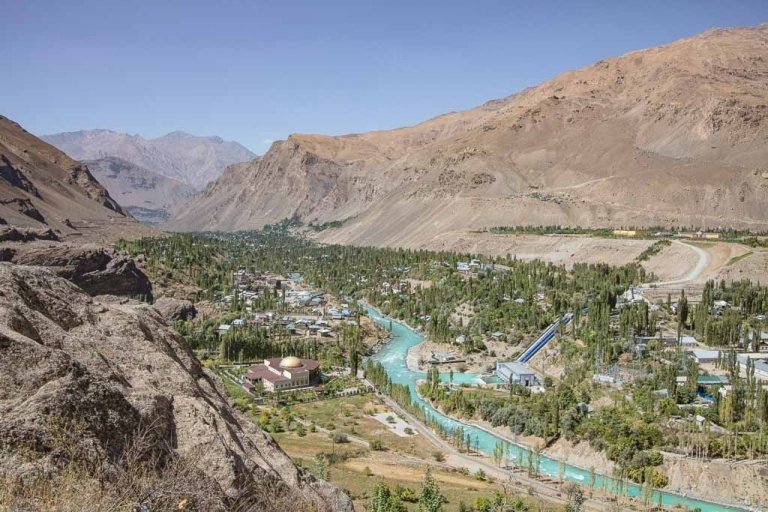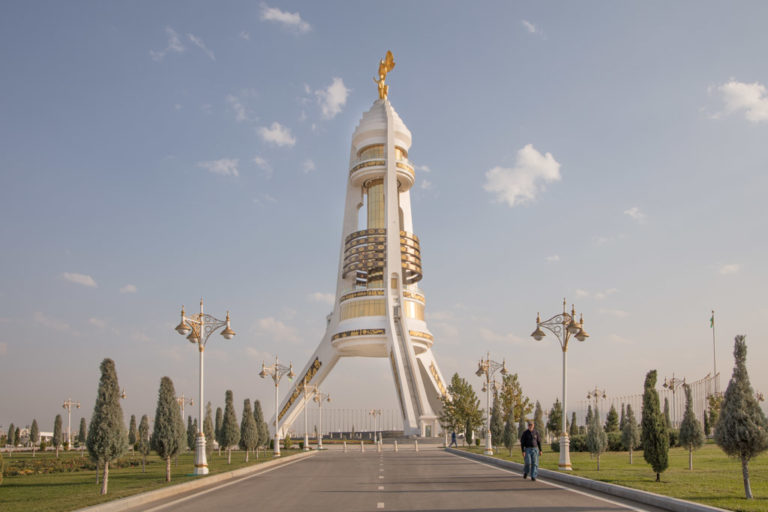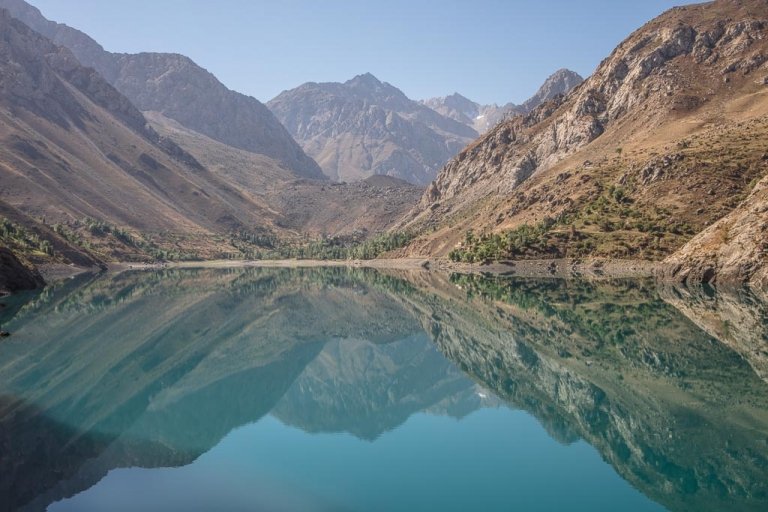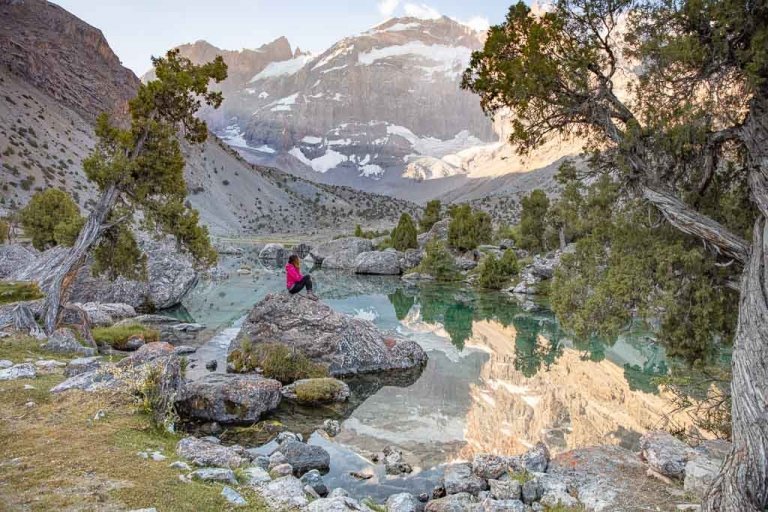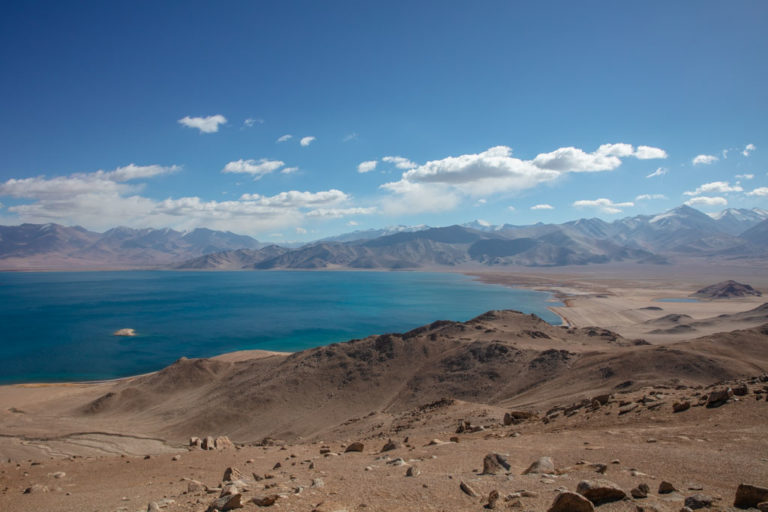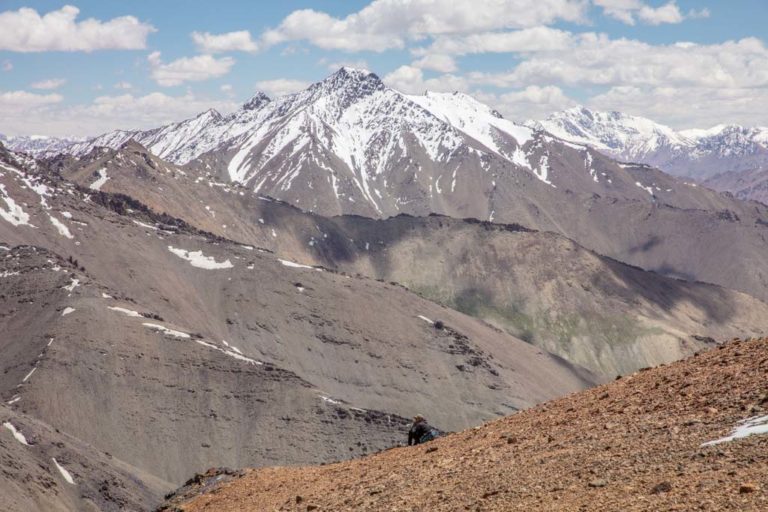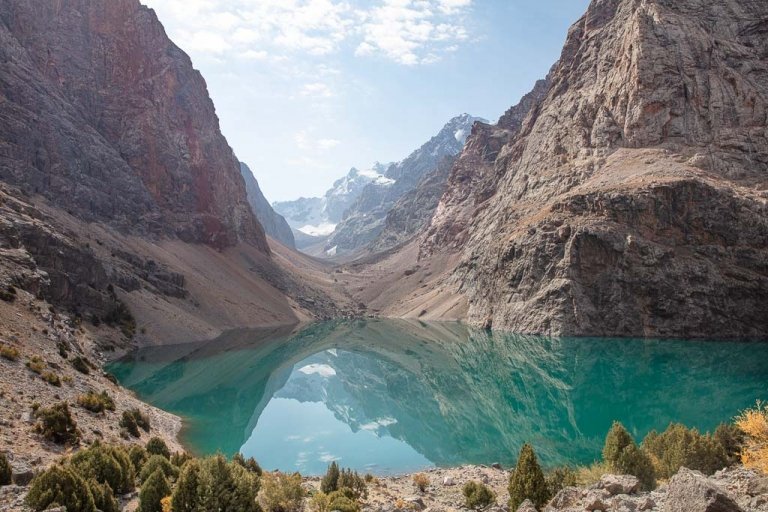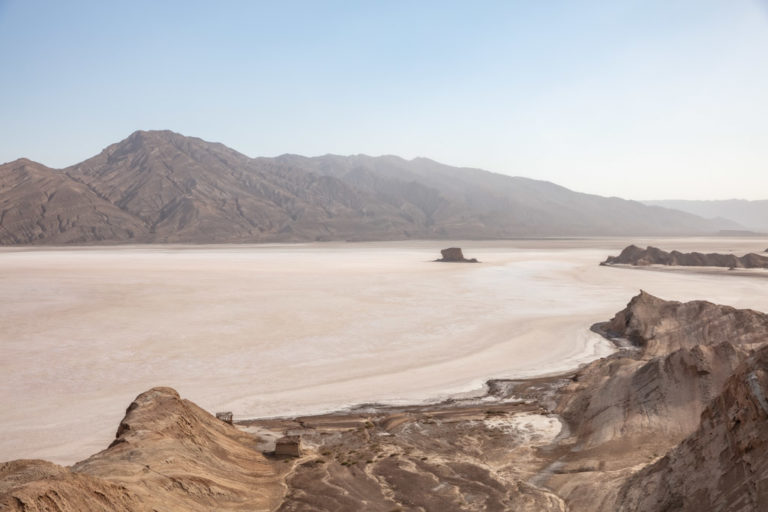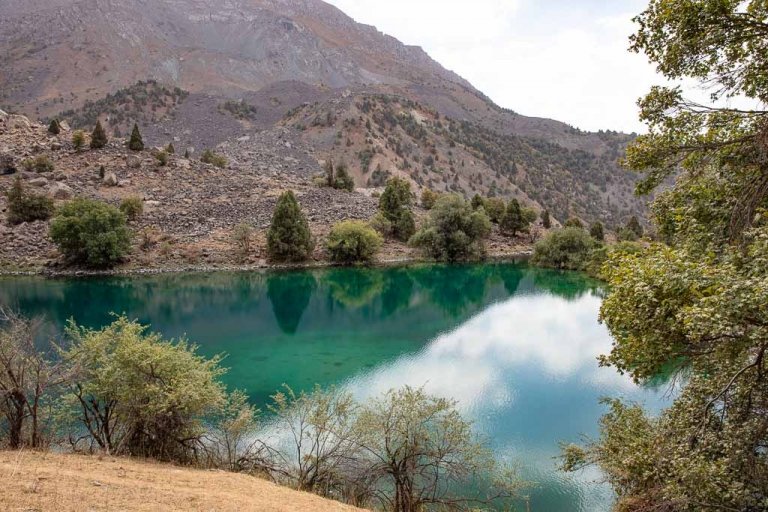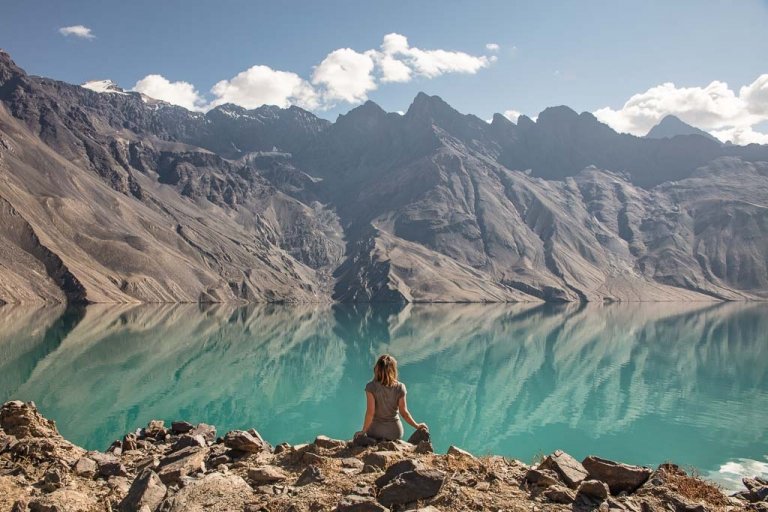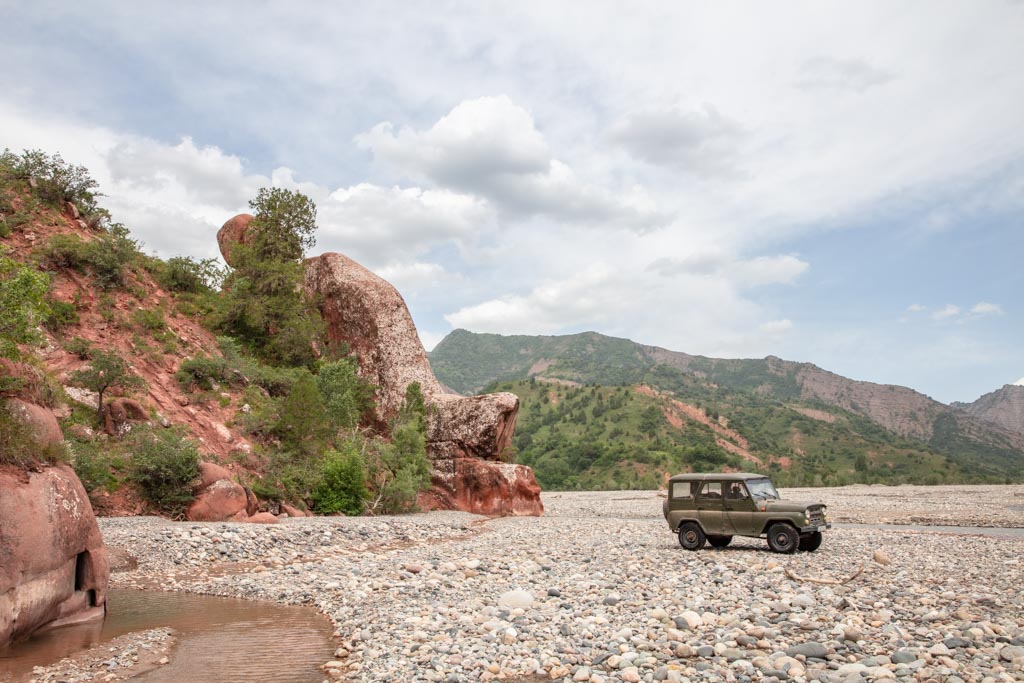
Visiting the Sary Khosar Nature Reserve, Tajikistan
Updated March 2023, Visiting the Sary Khosar Nature Reserve, Tajikistan was originally published in October 2021
Despite many visits to Tajikistan over the past few years there still was a giant blank spot on the map for me, that spot being the Khatlon Region. Khatlon has a lot to offer- mostly in way of history and culture, two things normally luring for me. Tajikistan’s high flying mountains have always drawn me away. Paired with the hot Khatlon summers, sending me running for the hills.
Seeing that my Afghan visa was set to expire in mid-June, sending me to Tajikistan earlier in the year than I’d ever been before, I decided that a visit to the Khatlon Region’s Sary Khosar Natural Park and Childukhteron Nature Reserve.
Upon a friend’s recommendation, I made my visits to Sary Khosar and Childukhteron my priority, seeing that this arid region is not green for very long- by late June it’s usually baked into a midsummer gold under the hot Tajik sun.
Start here: The Tajikistan Travel Guide
Pick up a copy of the Bradt Tajikistan Guidebook
How I got to Baljuvon
The first step to reaching Sary Khosar was to get to the town of Baljuvon, located in the north of Khatlon Province. Grabbing a taxi or a marshrutka is the easiest way to reach Dushanbe’s Sakhovat Bazaar. Once there, you’ll get dropped off near a shared taxi lot with most cars going to Danghara and other destinations in Khatlon. Say Baljuvon and you’ll find yourself directed inside the fence and toward the shared taxis departing to Baljuvon.
The journey to Baljuvon takes roughly two hours, a little longer if you have a patient driver- I did not, and we drove there at warp speed and frequently over 160 kph (yes, I was having a heart attack the entire way). A seat in the shared taxi will set you back 50 TJS.
An Afternoon Around Baljuvon
I was the last one to get out of the shared taxi in Baljuvon, I had said I was going to Sari Khosar, so the driver dropped me off at what looked like a massive concrete carport.
I had known from asking around to friends I knew in Tajikistan as well as the only snippet of information I could find online from Southern Tajikistan Tourism that it was possible to hire a UAZ to take you up Sary Khosar Valley or to wait around for the only form of public transport to depart- the Gaz-66.
Upon arrival, several men were waiting around to leave, sat chatting amongst each other they asked if I was going to be joining them in waiting for the mashina kalon (big car). I knew this meant the Gaz-66, so I said yes assuming that it wouldn’t be too long before we departed if that many people were already waiting for it.

One woman was flitting around the crowd who soon approached me asking if I was going up Sary Khosar Valley. She introduced herself as Zarina and soon dragged me by the hand around the corner and to a small house.
Inside was a woman, around my age with a toddler sitting on a tapchan (day bed). I soon discovered that the house functioned as a self-serve chaikhana with Zarina firing up a propane stove to warm up a pot of lagman. The entrepreneurial woman who seemed to own the outfit soon appeared with a large metal bowl full of damp laundry that she began to hang on a clothesline outside.

As the afternoon moved on several more women darted in and out of the chaikhana, some warming the same lagman, others preparing different food, but all paying 10 TJS for either a bowl of what was already made or to grab other items inside the room and begin cooking their meal.
Finally, Zarina burst through the door, excitedly saying that the Gaz-66 had arrived, so all of us inside sprang up and headed back for the carport.
As we rounded the corner the giant Gaz-66 came into view with locals already loading up on it.
Someone had already brought my backpack over that I had left at the carport to the mashina kalon. Loading me inside first before lifting the pack in and piling it in with the other luggage going up Sary Khosar Valley.

We were all nearly loaded up when we found out the mashina kalon needed a little work to make it up the valley, so we all disembarked. This time leaving the pile of baggage in the middle of the parking lot and all of us sitting on a curb as the last bits of golden sunshine shined over the Vakhsh Mountains.
We all sat chatting and laughing amongst each other, waiting probably an hour before the Gaz-66 came screeching back around the corner. We all loaded up on the wooden benches in the back of the big truck again. The engine of mashina kalon fired up and we charged toward the carport, whipping around and backing up. Someone had put in a concrete order from up the valley.

We shuffled bags around and then stacked concrete bag after concrete bag in the middle of the truck bed piling a high mass of concrete and bags on top of our feet and legs before passing up each of our 20 TJS fee. At 6 pm we began to trundle up the dirt road, starting with 29 people packed into the nack of mashina kalon, including the wirey teenage boys that were clung to the roof of the Gaz-66 cab.
Plot out your visit to the Pamirs with the Pamir Highway Travel Guide
The Journey Up Sary Khosar Valley
The ride along the dusty and rough dirt road was an adventure all in itself, with the mashina kalon bucking wildly at every twist, turn and bump. Even the two sternest of faces- two older men, one who started out wearing a traditional doppa camp giggled like children as we made the slow drive.

As we continued along we would drop off people and families at qishlaqs with them hugging and waving goodbye to friends and family that remained on the Gaz-66 to continue to their homes up the valley. We also would stop at times outside the qishlaqs and wait for a passenger or 5 to come skittering out to hop into the back. The Gaz-66 driver seemed to know where every passenger lived and picked up phone call after phone call of riders needing a lift along the route.
At one point I think I counted over 40 of us packed inside and hanging from the roof of mashina kalon.
The real fun began once we started into the river crossings, sending reddish muddy water flying up and into the back of the Gaz-66, followed by shrieks of laughter from women and kids getting splashed.
By about 8 pm the sun had gone down and the last filaments of blue hour remained. We lurched to a stop along the river with Zarina popping up with us loading a jug of oil and a couple of bags down to her. I thought this was where I would say goodbye to the woman who had taken me under wing for the afternoon when she motioned to my backpack and myself.

I was without a plan in Sary Khosar aside from seeing where the adventure brought me so I shrugged and thought why not? I hopped out of the bed of the mashina kalon, waved goodbye and a khayr to my other road trip buddies and followed Zarina into the dark of night.
Little did I know, getting to Zarina’s home would be an adventure all in itself. The first obstacle was to cross the Shurobdarya (formerly the Surkhob River) to the other side on what was likely one of the most rickety, scary wire-and-wood bridges in the history of Tajikistan- a land already chock full of horrifying handmade bridges.
The bridge swung violently over the river as we crossed carefully over the bridge that seemed to be missing more than every other slat. Zarina gracefully hopped slat to slat like an Olympic gymnast who could fly across the bridge in her sleep without a single bobble, not even glancing down.
After hopping back to safety on dry land, Zarina followed a path along the river that eventually turned into a narrow path that climbed a short precipice. Up top, Zarina pointed out a bench in the dark of night, motioning that it was time for a break. She pulled out her phone and made a call and within a few minutes, a young boy met us, grabbing some of our bags and packages.
We meandered between orchards of fruit trees and grazing cattle that were merely black shadows against a dark navy blue sky, finally arriving in Zarina’s village of Boghizoghon around 8:30 pm. I soon met four of Zarina’s seven children before they ushered me off to their hammam for a shower before the kids served dinner.
We sat over a dinner of fried eggs and herbs with Zarina’s three daughters and one son living at home. The others were living in Dushanbe either working or studying, while Zarina raised the four youngest here in the Sary Khosar Valley on her own.
Zarina’s husband had left and never came back to Boghizoghon. I got the feeling that he was still alive somewhere and had abandoned the family. Zarina being a strong woman and quite the hustler made it apparent that was unwelcome.
Soon after dinner, it was time to roll out the kurpachas and call it a night.
Plan your visit to the Tajik capital: The Dushanbe Travel Guide
An Adventure Up Sary Khosar Valley
We all awoke early the next morning to the eldest of the daughters serving up more fried eggs. Zarina picking up her phone over breakfast to call around, looking for a UAZ driver.
Soon after, we were walking up a dirt road to a small shop where Zarina proceeded to buy a sack of sweets before the driver arrived. It was clear at that point Zarina was going on vacation that day with me.
The UAZ rattled up a short while later, driven by a young guy named Eshon. I handed the 250 TJS that Zarina had negotiated over to him and we were on our way toward Shahidan, the main and most established village of the Sary Khosar Valley.
Looking for off the beaten path destinations nearby? Don’t miss the 40 spires of Childukhtaron
Shahidan
In Shahidan Eshon pulled up to a gas station to sill up the UAZ, while Zarina took me by the arm, giving me a quick tour of the village. Zarina paraded around waving to everyone and even taking me over to pay a quick visit to the local school where we chatted with two men in the garden before hopping back in the UAZ.

Dashtoro and the Giant Chinar
The next stop on the agenda was the village of Dashtoro, one of the Sary Khosar Valley’s largest. The main attraction around Dashtoro is the large and hollowed-out Chinar tree sat in a field of verdant grass.


The three of us took turns taking photos of each other in the hollow of the Chinar tree while a couple of local girls giggled sitting a rock peeking over at us.

We hopped back into the UAZ and Zarina gave Eshon instructions away from the tree, seeing us pull up in the heart of Dashtoro village. A woman soon waved us over, Zarina hopping out of the moving car giving her a big warm hug.
The woman was a dear friend of Zarina’s, who invited us in for chai and snacks, and Zarina gifting her with the large bag of sweets she purchased in Boghizoghon.


Mullkoni Falls
We continued to Mullkoni next, a sizeable distance from Dashtoro. En route we began to run low on gas, so we made a pitstop in the village of Rezgam to ask anyone if they were willing to sell us some gas (this was a common occurrence all over Tajikistan in the summer of 2021).

I was somewhat surprised to reach Mullkoni and met with a large modern hotel, sat right next to it, of course with the omnipresent Emomoli Rahmat banner hung outside.
A concrete walkway led the way up from the Sary Khosar Resort to the cascading Mullkoni Falls, passing beautifully carved tapchans on the way up. In all honesty, Mullkoni Falls wasn’t my favorite part of the trip but it wasn’t terrible.

Before we left the hotel, we managed to have a quick lunch of barley, beef, and potato soup before continuing to the Balancing Rocks. We did take one of the men who worked at the resort with us who know where to look for the famed rocks.
The Balancing Rocks
The way the crow flies, the Balancing Rocks are only 3 km from Mullkoni Falls, but the ride there required a rough drive over rocks in the dry river bed.
The area around the Balancing Rocks consists of some bizarre rock formations, though the main attraction is a small rock arch made of three main rocks teetering atop each other.

Further Afield into the Sary Khosar Natural Park
It is possible to continue northeast, following the course of the Sary Khosar Valley or along a rough path from the village of Kulkhucha to Mazar i Sultan in Ob i Mazor Valley north of Khovaling.
While I had intended on doing some more trekking in the Sary Khosar area, I ended up scrapping it owing to the June heat, and the many warnings I had received from locals regarding the wild boars and wolves that frequent this fairly desolate corner of Tajikistan.
The Sary Khosar Natural Park offers a lot of trekking potential, but heeding the warning of the locals, I would recommend hiring a local guide to arrange a trip. I had heard that many locals carry rifles as protection from the wildlife if that’s any indicator of what could lurk out there.

UAZ Turned Shared Taxi Back to Baljuvon
As we dropped our friend back at the hotel around 4 pm, the wind picked up and dark clouds began to loom overhead, helping make our decision to head back to Baljuvon so that I could continue to Childukhteron the next day.
We soon turned into a shared taxi as several people would run out toward the UAZ, bags in hand trying to flag us down when they heard the roar of the engine passing by.
Given the rough conditions of traveling the Sary Khosar Valley, we of course broke down for well over an hour, holding us up for a couple of hours. By 11 pm we finally did make it back to Baljuvon. Zarina, being a well-connected woman called up a friend of hers who welcomed the three of us in for the night with a plate of liver (my least favorite food on earth, but I couldn’t be rude and refuse, so I had to struggle through a couple of bites).
Practical Information for Visiting Sary Khosar Valley

Transport
There is no regular transport up and down Sary Khosar Valley, thus, there is no clear schedule. The Gaz-66 (mashina kalon) is the closest thing to public transport, though you can usually hire a UAZ from Baljuvon to head up the valley.
A ride up the Sary Khosar Valley in the Gaz-66 will set you back a whopping 20 TJS, just know it’s a slow and bumpy ride. Everyone along the valley seems to know the Gaz-66 driver and have his number, so if you arrive and want to know when it may show up just ask around and find someone to make the call for you.
Expect to pay around 600 TJS or so with a little haggling for UAZ from Baljuvon to the Balancing Rocks and back.
The UAZs and Gaz-66 leave from a lot next door just a few steps west of the Baljuvon Bazaar. You can see the exact location on Google Maps.
If you have your own wheels- meaning at very least a 4WD you can attempt to take on Sary Khosar Valley independently.
You can reach Baljuvon by shared taxi from Dushanbe in about two hours for 50 TJS per seat.
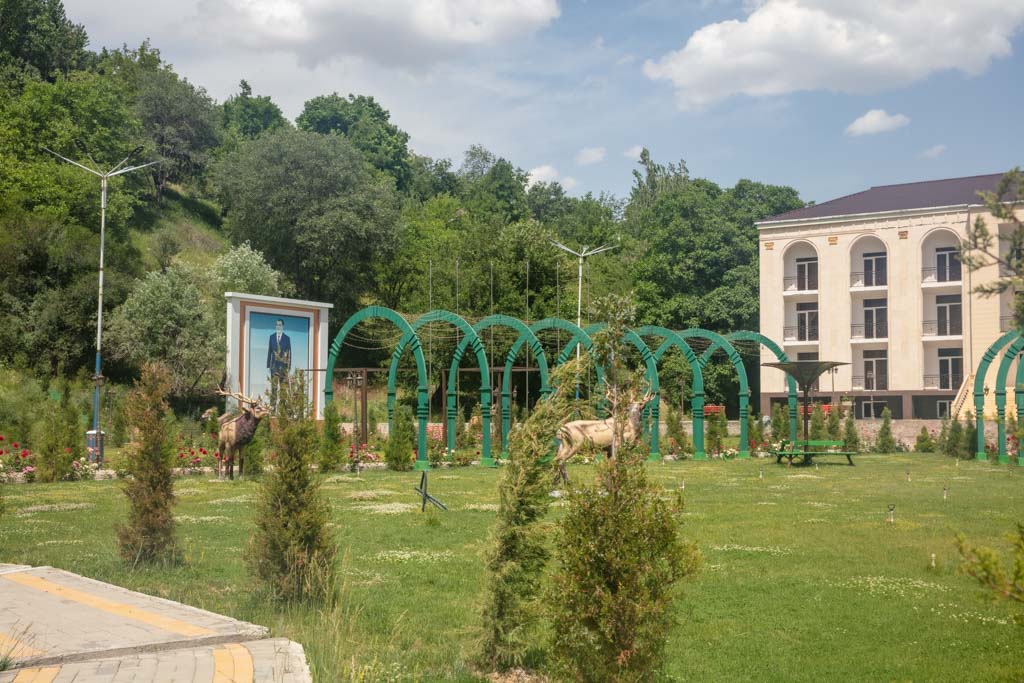
Accommodation
It’s not a bad idea to bring camping gear with you if wanting to explore Sary Khosar Valley in-depth as you will likely find yourself way off the beaten path and away from villages.
Most villages will have at least one house that operates as an informal homestay, and people here are incredibly friendly and curious as they do not get many visitors. It’s common to get taken in by a warm family here in Sary Khosar.
With that said, the Sary Khosar area is not wealthy so if a family does take you in, even if it’s only for a pot of chai- you should leave some Somoni as a thank you.
There is a hotel at Mullkoni Falls now, offering rooms for around 400+ TJS per night.

Best Time to Visit
June is the best time to visit Sary Khosar for the brief time that the valley pops with emeralds and chartreuse. Enquire in advance that the valley is navigable as the rains that can sweep the area in the late spring can hamper travel along the river.
July-September are also a great time to visit Sary Khosar, just realize that it can get quite hot and the valley becomes pretty arid.
From October to May transport can be very inconsistent and high water can make travel almost impossible.

Main Attractions
- Shahidan (Sary Khosar) Village
- Dashtoro Village
- Lucky Stone’s Throw
- Dashtoro Chinar Trees
- Mullkoni Falls
- Balancing Rocks
Other Useful Information
- If you don’t speak any Tajik it would be wise to hire a guide as it’s the only widely spoken language out here. If you have some Russian language skills you may be able to get around, but do expect some confusion.
- Since this is a fairly rural area, conservative dress is best. For men shoulders and knees should be covered at very least. Woman should wear full length trousers, short sleeve tops are okay but long sleeve is better, headscarves are not necessary.
Have any questions about visiting Sary Khosar?
Ask in the comments section below, and check out this post on Southern Tajikistan Tourism.
Need Travel Insurance for Tajikistan?
Start shopping plans over at battleface, my go-to travel insurance choice, or over at World Nomads.





